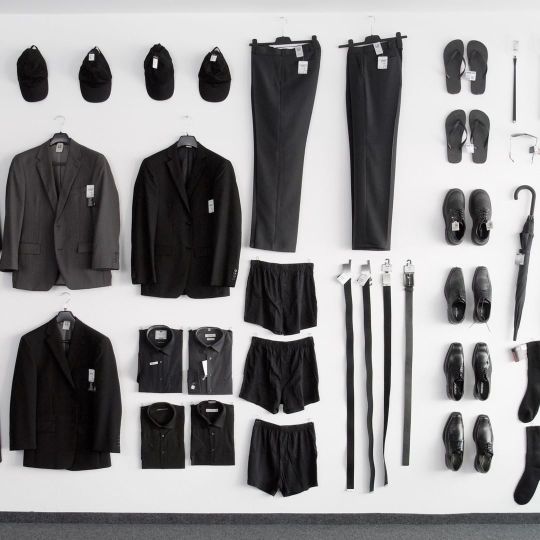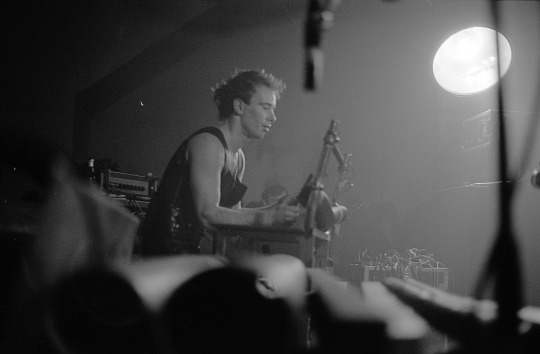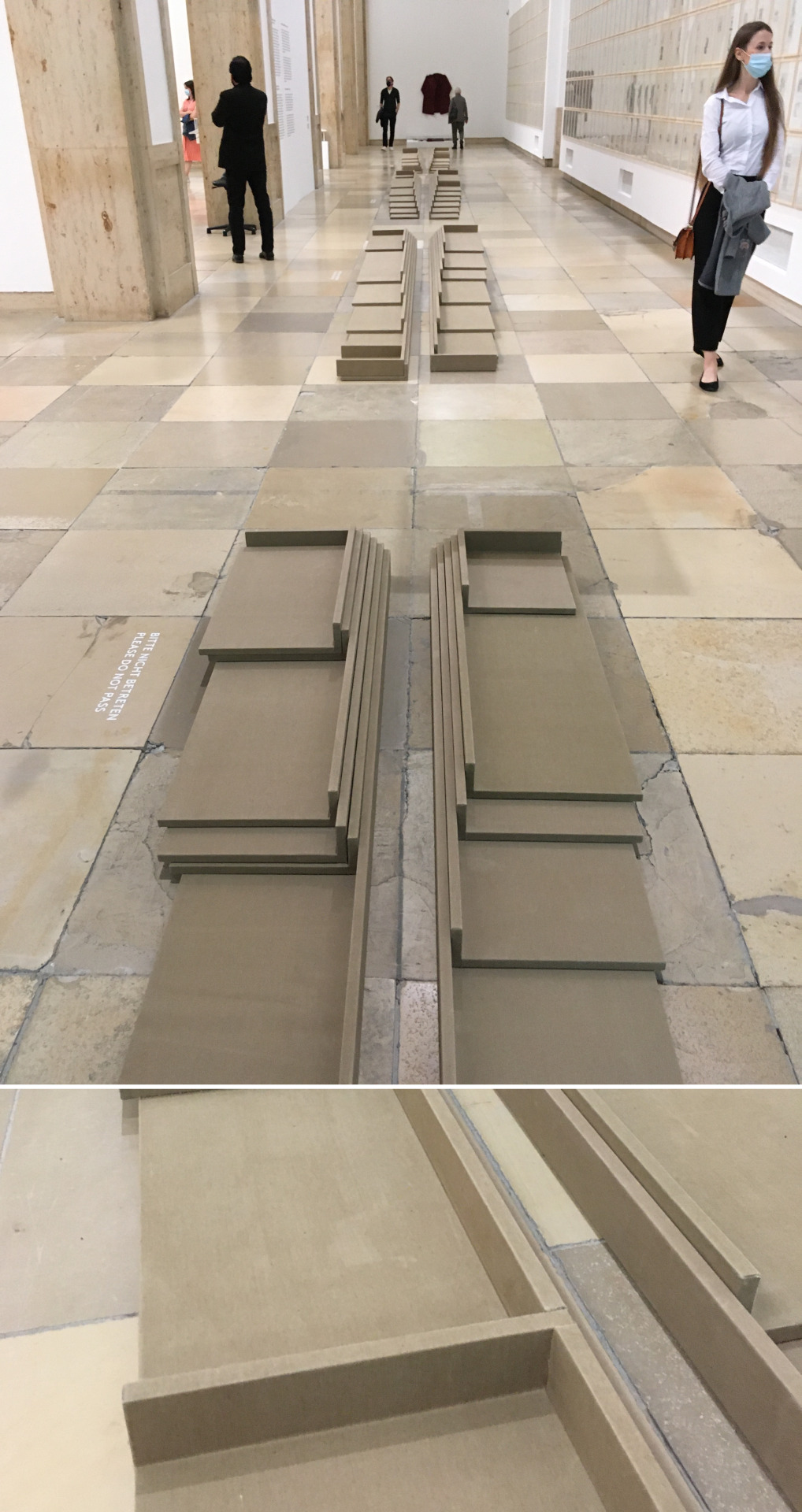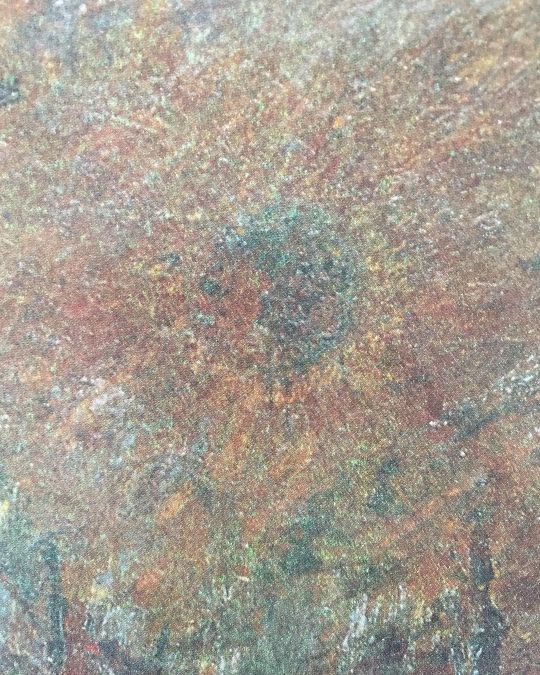#hausderkunst
Photo

Cambio – Change, 2011; Installation, @ offshore - money for the show, Künstlerverbund im Haus der Kunst München. In exchange for a modest fee, artists are invited to present one work for 15 minutes (of Warholian fame). My contribution will be screened 13.10.22, at 20 h. I choose a work that has to do with money and exchange: I buy a set of basic items (jacket, trousers, shoes, umbrella), returne them, by more, but cheaper ones. The inital budget remaines the same. Shops were a.o. #hirmer #karstadt #cunda #deichmann. Installation together with receipts and packing material at the temporary Kunstraum #unicredit, Munich, 2011. Der Künstlerverbund im Haus der Kunst München veranstaltet 30.09. -14.10.2022 das Projekt "offshore - money for the show". Gegen eine kleine Spende zur Finanzierung der nächsten Austellung kann man für 15 Min. (Bildschirm)Ruhm erlangen bzw. diesen vergrößern. Mein Beitrag ist am 13.10.22 um 20 Uhr zu sehen. Ich habe eine Arbeit ausgewählt, die mit dem Thema Geld und (Um)Tausch zu tun hat: Ich kaufe dabei Jacke, Hose, Schuhe, Schirm und tausche sie gegen immer günstigere Gegenstände um. Der Ausgangsbetrag bleibt dabei gleich. Die Gegenstände, zusammen mit Kassenzetteln und Verpackungen, zeigte ich als Installation im temporären Kunstraum Unicredit, München, 2011. #contemporaryart #shopping #change #umtausch #offshoreshow #moneyfortheshow #kuenstlerverbund_hdk #kuenstlerverbund_hausderkunst #munichartists #hdk #hausderkunst #munich #ausstellung #artlover #artoftheday #exhibition #kunstburoreillplast #shopping #change #umtausch #albert_coers #albertcoers (hier: Haus der Kunst) https://www.instagram.com/p/CjqB087q4lO/?igshid=NGJjMDIxMWI=
#hirmer#karstadt#cunda#deichmann#unicredit#contemporaryart#shopping#change#umtausch#offshoreshow#moneyfortheshow#kuenstlerverbund_hdk#kuenstlerverbund_hausderkunst#munichartists#hdk#hausderkunst#munich#ausstellung#artlover#artoftheday#exhibition#kunstburoreillplast#albert_coers#albertcoers
0 notes
Photo

#münchen#munich#hausderkunst #kultur#fujikonakaya #ausstellung #ohnenebel#culture#exhibition #withoutfog https://www.instagram.com/p/Cc6FSYxoW3U/?igshid=NGJjMDIxMWI=
#münchen#munich#hausderkunst#kultur#fujikonakaya#ausstellung#ohnenebel#culture#exhibition#withoutfog
0 notes
Text
Einstürzende Neubauten in the 80s

Copenhagen,Ungdomshuset, 1984/10/05 (?)
📸:Robin Skjoldborg

FM Einheit, Bochum, 1982
📸:Wolfgang Burat




Amsterdam, 1985/02/16
📸:Claude Crommelin

New York, Dancetaria, 1984/02/23
📸:Fred H. Berger

N.U. Unruh, documenta 7, Fridericianum, Kassel, 1982
📸:Peter Gruchot





Zeche, Bochum, 1984/06/07
📸: Ar/Gee Gleim
sources: untergangsshow, hausderkunst, lfi-online
93 notes
·
View notes
Photo

München 2020
#münchen#munich#2020#photography#nature#natur#eisbach#eisbachwelle#schwabingerbach#hausderkunst#englischer garten#wasser#frühling#spring#mood#himmel#wolken#clouds#cloudy#insel#fotografie#bestshot#perspektive#schaunachoben#kunst#art#findeblog#dreizehnter
3 notes
·
View notes
Photo

Julian Rosefeldt The Shift (One of Six Works), 2008
#julian rosefeldt#paddle8#photography#design#architecture#architektura#hausderkunst#culture#kultura#photo
77 notes
·
View notes
Photo

No more excuses.
Source: https://www.instagram.com/brittareineke/
#design#art#typography#munich#hausderkunst#arty#inspiration#letters#typo#designinspiration#minimalism#modern#style
6 notes
·
View notes
Photo

Readymade Painting Working with computer-generated and digitally modified imagery of parts of my paintings, I create readymade surfaces based on these investigations. The work on paper grapples with reflections over the mediatization of art in general and the subjective traces of painterly expression in particular. UV-medium, oil, and varnish have been applied to a surface, which has been digitally printed as an Archival Pigment Print on Hahnemühle Torchon (285 g/m²). #hausderkunst #pinakothekdermoderne #openartmünchen #kunstinmünchen #kunsthallemuc #viennacontemporary #galleryweekendberlin #kunstforum #schirn
#galleryweekendberlin#openartmünchen#schirn#kunstforum#pinakothekdermoderne#kunsthallemuc#viennacontemporary#hausderkunst#kunstinmünchen
2 notes
·
View notes
Photo

Haus der Kunst. One step closer to post lockdown lifestyle. #coronasucks #postcorona #hausderkunst #museum #modernart #munich (hier: Haus der Kunst) https://www.instagram.com/p/CPVtMMXBIUn/?utm_medium=tumblr
0 notes
Photo

Super BOOKS @haus_der_kunst Danke! #hausderkunst #artistsbooks (hier: Haus der Kunst) https://www.instagram.com/p/CWQQQFRMUBJ/?utm_medium=tumblr
0 notes
Text
On the Spatiality of Time, Linear and Rectilinear
Magda Wisniowska’s thoughts on the exhibition of Franz Erhard Walther’s work at Haus der Kunst – Munich, November, 2020.
With its sombre form and dull grey fabric “Song of the Walking Pedestals” (1975-77), is not perhaps the most eye-catching of Franz Erhard Walther’s works, and that is also perhaps why it is confined to one long, corridor-like room at the back of the Haus der Kunst’s major retrospective of the artist. As the museum label helpfully explains, it consists of three elements. There is the physical object, in four parts, with each part divided into two along a central axis. Each of these divided sections consists of six to eight wooden, cotton-covered rectangular components, box or tray-like in shape, with one or two sides missing. These components are stacked one on top of another, lined up to open outwards, the full sides slotting neatly into the corner. The top tray is small and can be picked up comfortably; the one lowest down is more than four metres in length. Together they form a series of low lying, irregular steps, their rhythm occasionally interrupted by a tray which has three sides instead of two. Then, there is the second element, the viewer or rather in this case, the participant, who walks up and down these objects, perhaps pausing at each end. As the panel states, by walking along the path dictated by the object, our activity completes the work, the object “becomes a pedestal, and the body, the sculpture.” Finally, there is element number three, the architectural setting: the long windowless room with its high ceiling and modest light; the stone tiled floor, almost exactly the same colour as the cotton fabric.

[Installation view and close-up of Franz Erhard Walther's 'Song of the Walking Pedestals' (1975-77) at Haus der Kunst, Munich, 2020; Image credits: the author]
Again, as the panel states, the work is deemed significant because of the way it expands the “traditional understanding of sculpture” by “elevating the body, space, and time to its material.” Space, understood here as the space occupied by the work, is defined by the movement of our body, which occurs in time. All three — space, body, and time —become the material of the work. These concepts of the body, space, and time recur throughout the exhibition; they are key terms in the artist’s practice.

[Information panel to Franz Erhard Walther's 'Song of the Walking Pedestals' (1975-77), as installed at Haus der Kunst, Munich, 2020; Image credits: the author]
Standing in this long room, never able to see the entirety of the work except from each end, it occurred to me, that these concepts — the body, space, time — as they are presented here, are framed in a very Kantian manner. Kant takes his cue from Isaac Newton and it is true that the work has a Newtonian character. Space is distinct from the body — as is time, passing with the uniformity of a well sprung pocket watch. The motion of a body occurs through space and in time, its path mapped along two key axes, coordinates charting its speeds, pauses, and moments of acceleration. Walking up and down the work, we can draw a line of our movements, our body reduced to point A or B or C, progressing across the grid of the tiled floor.
Out of the three concepts, especially the concept of time has a prominent part to play. I do not think it is a coincidence that the wall piece above “Song of the Walking Pedestals” is “Dust of Stars. A Drawn Novel” (2007-2009) in which Walther documents the development of his oeuvre with individually framed drawings of key moments in his life, all 524 of them. In “Song of the Walking Pedestals” time acquires a physicality, a spatial dimension. If the text of the institutional panel suggests that it is the movement of our body that defines the space of the work, I want to counter that it only does so because it already posits a spatial concept of time. This has to do with what Gilles Deleuze calls Kant’s “great reversal,” in which time stops being related to the movement it measures and instead conditions this movement, as it does all bodies, because it conditions our perception of them. Deleuze writes,
…movement is no longer the determination of objects, but the description of a space, a space we must set aside in order to discover time as the condition of action. Time thus becomes unilinear and rectilinear, no longer in the sense that it would measure a derived movement, but in and through itself, insofar as it imposes the succession of its determination on every possible movement. This is a rectification of time. (“On Four Formulas” in Essays Critical and Clinical, 28)
Deleuze describes Kantian time as a condition of action, derived from a movement which is no more than a description of space. Time is unilinear, a line; this line is straight, rectilinear. Rectification here refers to the activity of straightening.
Space and time are two important concepts in Kant, defined as the two forms of pure intuition that allow for the syntheses of knowledge. The form of space belongs to our outer sense, the way in which we present objects as outside of us. In space, their shape, size, and relation to one another can be determined. Time is the form of inner sense, the way in which our mind presents thoughts to itself as occurring in a sequence. Neither space nor time is a property of the outside world — things for Kant are not inherently spatial and it would follow that for Kant not all thoughts are time-based — but together they are necessary for how this world is perceived by us. The world appears to us in space and in time.
The question I have at this point is of the relation between the two, that which Deleuze describes as the “setting aside of space” to “discover time as the condition of action.” Whatever determination of outer sense we might make, this is a determination, which is made in the mind, one which involves the activity of the mind in order to be made. Hence all appearances occur not just in space but also in time. From this, it would seem that time casts its character, stamps its mould if you will, over all spatial determinations. Yet it is not so, as Kant takes care to point out in a note to his Preface (B xl) in which he requests a passage change to further elaboration of this issue in the discussion of synthetic principles in the Transcendental Logic (B 275). In both places, Kant presents the consciousness of our existence in time as linked to the consciousness of a relation to something outside of ourselves. There is a link between how we experience our own thoughts and how we experience the outside world. We experience our inner thoughts externally, in the same way we experience any other object to which we relate. Kant goes a step further, to argue that this is the very definition of inner sense, this ability to have this distance of an indirect relation to one’s own thinking, to experience what is inner as an outer. Kant wants to prove that our inner experience, so indubitable for Descartes, is only possible by presuming an outer experience.
With inner sense being only possible through having an outer sense, it is not surprising that in Kant the form of time acquires the taint of geometry. If we perceive the world spatially, as a series of objects and their relations within a given space, we experience thinking, as it occurs in time, in much the same way. As Deleuze would say, this is why time in Kantian philosophy acquires this unilinear and rectilinear character: it becomes an axis, a straight line. For Walther too, the passage of time takes this linear shape, especially visible in a piece like “Dust of Stars,” where the development of the work is reduced to single ordinal points, each enclosed by an identical rectangular frame.
This pervasive aspect of geometry was also my impression of the exhibition and specifically this piece, “Song of the Walking Pedestals.” I would argue that it too involved a spatial concept of time, in which the sense of time relates to the sense of space. Yes, we define a space with our movements as we experience the object, becoming as it were, the sculpture, and the object, our pedestal. But we can experience the object in this specific way because the work already makes certain assumptions. Through its insistence on the line, on right angles, on those series of progressive, upward steps, it puts us in the position of a body that is defined through its capacity of perceiving the world only through these spatial relations. I have likened the components of the piece to open ended trays, to give the sense that these are to present us, the viewer, as the active participant of the work. But maybe they are more like the lids of open boxes, ready to enclose us and diminish us to a single point on an axis.
Walther’s work, “Song of the Walking Pedestal” calls us to expand our notions of sculpture. As the museum panel states, no longer is sculpture to consist of a mere three-dimensional object placed on a pedestal, but is now to incorporate the viewer as an active participant. The work is the viewer’s body, his movement, his definition of architectural space. What was previously unseen, in this work gains a materiality. But if the work expands our notions of sculpture, it does so in quite a narrow way. For the materiality it espouses is already mathematically determined: space is a matter of shape, size, relation; time is experienced in the same way as space; movement becomes subordinated to the two and no more than a description of space; and the body, this is caught up in the various lines the work has drawn, to become a mere a point of relation.
#magdawisniowska#meta review#franzerhardwalther#hausderkunst#definitionofspacethroughthebody#sculpture#deleuze#kant#space#time#movement#formsofintuition
0 notes
Photo



Julian Rosefeldt The Shift (Six Works), 2008
The four-channel film installation The Shift (2008) recalls Rosefeldt’s early inquiries into hidden and forgotten spaces. Once again the protagonist is a lonely wanderer who moves slowly through a science-fiction setting, a giant network of tunnels and various control rooms filled with outdated technology.
#paddle8#julianrosefeldt#architecture#architektura#design#photography#hausderkunst#installation#musuem#german#science fiction#technology
5 notes
·
View notes
Photo

Sometime last yr. Since its africa day il share some pics from african artist el anatsui. He uses trash to make fascinating large scale art. Kinda like a metaphor for how we’ll use the current situation to make something better. Wishing good vibes for everyone 2nd half of 2020. #africaday #hausderkunst #elanatsui (at Haus der Kunst) https://www.instagram.com/p/CAn777xKYO-/?igshid=1pkm7jc0r5l8d
0 notes
Photo

#adagp Painting number 2 (Détail) : « San Francisco, le pont » Tapioca, Acrylics on Watercolor Paper #techniquedutapioca #themastersoflight #themetropolitanmuseumofartnewyork #lejournaldesarts #cimaises #modernartmuseum #hausderkunst #artpress #beauxartsmagazine #francismbellaetlesreflexeschromatiques #loeil https://www.instagram.com/p/CTce8ZcIUlj/?utm_medium=tumblr
#adagp#techniquedutapioca#themastersoflight#themetropolitanmuseumofartnewyork#lejournaldesarts#cimaises#modernartmuseum#hausderkunst#artpress#beauxartsmagazine#francismbellaetlesreflexeschromatiques#loeil
0 notes

